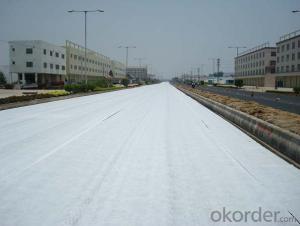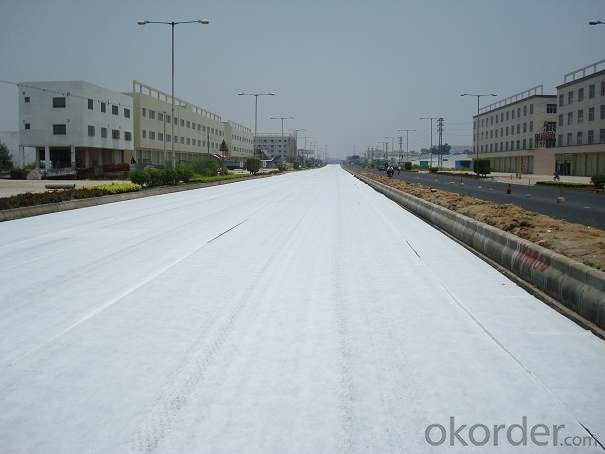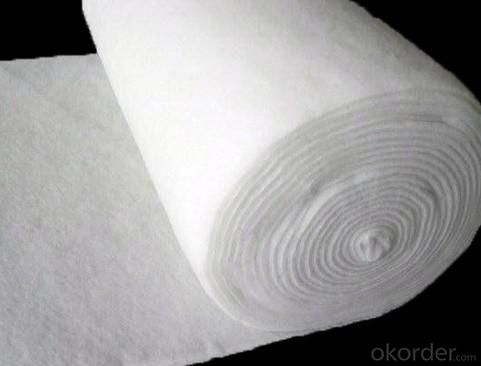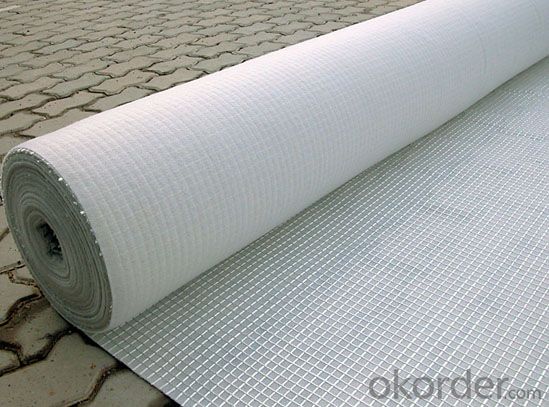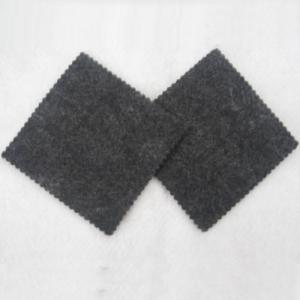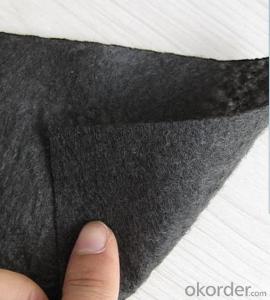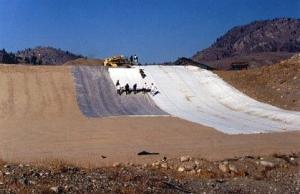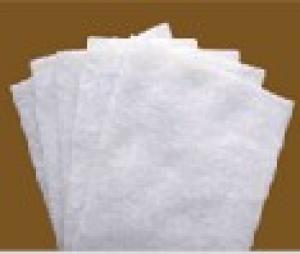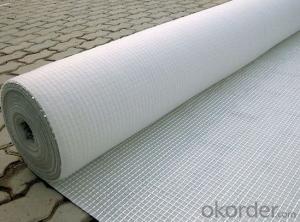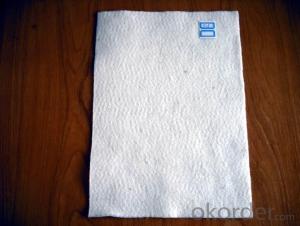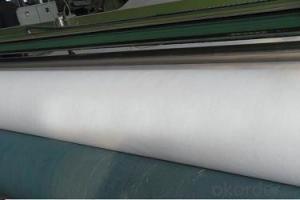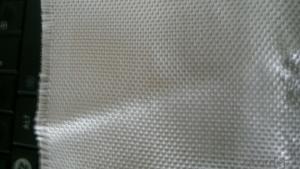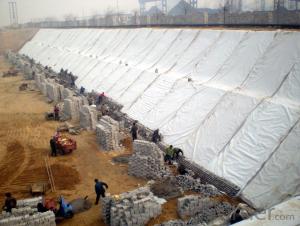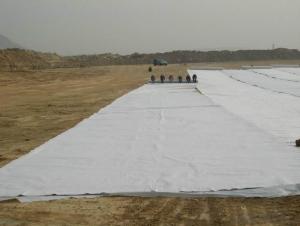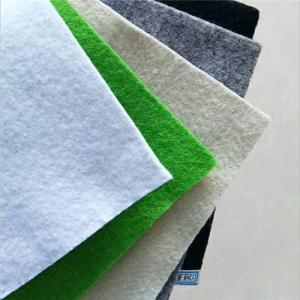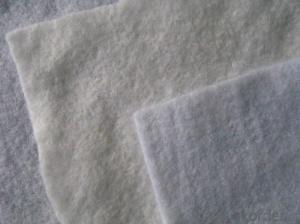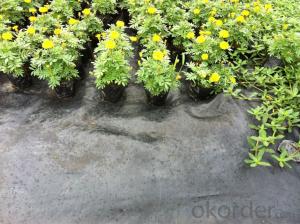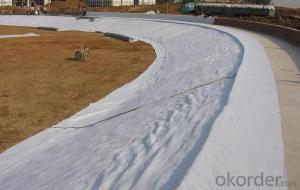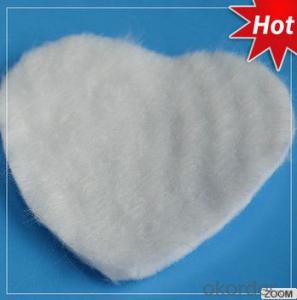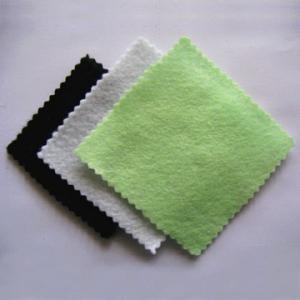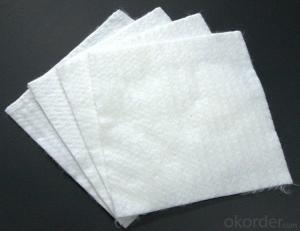Polypropylene Polyester PP/PET Non Wovens Short Fiber Geotextile Fabric
- Loading Port:
- Qingdao
- Payment Terms:
- TT or L/C
- Min Order Qty:
- 10000 m²
- Supply Capability:
- 100000 m²/month
OKorder Service Pledge
OKorder Financial Service
You Might Also Like
Woven Geotextie Specification :
No. | Item | 20-15 | 30-20 | 40-28 | 50-35 | 60-42 | 80-56 | 100-70 | |||
1 | MD Breaking Strength KN/M≥ | 20 | 30 | 40 | 50 | 60 | 80 | 100 | |||
2 | CD Breaking Strength KN/M≥ | 15 | 20 | 28 | 35 | 42 | 56 | 70 | |||
3 | Elongation Rate % | 25 | |||||||||
4 | Trapezoidal Tearing Strength KN ≥ | 0.2 | 0.27 | 0.334 | 0.41 | 0.48 | 0.6 | 0.72 | |||
5 | CBR Burst Strength KN | 1.6 | 2.4 | 3.2 | 4.0 | 4.8 | 6.0 | 7.5 | |||
6 | Vertical Permeability Coefficient cm/s | 10-1 ~ 10-4 | |||||||||
7 | Sieve size O90(O95) mm | 0.07~0.5 | |||||||||
8 | Unit Weight g/m2 | 120 | 160 | 200 | 240 | 280 | 340 | 400 | |||
9 | Variation % | ±10 | |||||||||
Filament nonwoven geotextile :
NO. | Item | Value | ||||||||||
100 | 150 | 200 | 250 | 300 | 350 | 400 | 450 | 500 | 600 | 800 | ||
1 | Weight Variation(%) | -6 | -6 | -6 | -5 | -5 | -5 | -5 | -5 | -4 | -4 | -4 |
2 | Thickness(mm)≥ | 0.8 | 1.2 | 1.6 | 1.9 | 2.2 | 2.5 | 2.8 | 3.1 | 3.4 | 4.2 | 5.5 |
3 | Width Variation% | -0.5 | ||||||||||
4 | Breaking Strength( KN/m)≥ | 4.5 | 7.5 | 10.5 | 12.5 | 15 | 17.5 | 20.5 | 23 | 25 | 30 | 40 |
5 | Elongation at break% | 40-80 | ||||||||||
6 | CBR Mullen Burst Strength KN≥ | 0.8 | 1.4 | 1.8 | 2.2 | 2.6 | 3 | 3.5 | 4 | 4.7 | 5.5 | 7 |
7 | Sieve Size O90(mm) | 0.07-0.2 | ||||||||||
8 | Vertical Permeability Coefficient cm/s | K×(10-1-10-3),K=1.0-9.9 | ||||||||||
9 | Tearing Strength KN≥ | 0.14 | 0.2 | 0.28 | 0.35 | 0.4 | 0.49 | 0.56 | 0.6 | 0.7 | 0.8 | 1.1 |
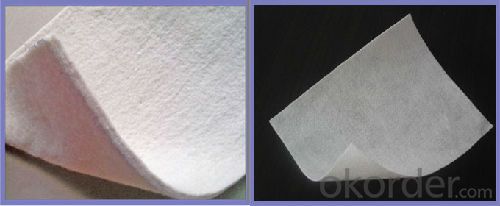

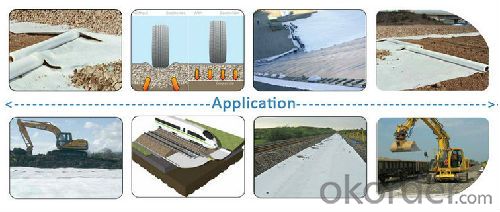
FAQ of our geotextile:
- Q: What can we do for the special customer?
A: Provide custom made service with customer's drawing; We make sure to provide you with the best solutions for your individual case. Whether standard items or non-standard items.
- Q: What can we supply?
A: We provide high levels of communication from start to finish.
- Q: What is our advantage?
A: Top Cemented Carbide has extensive business experience, Fast delivery and high quality.
As its name suggests Geotextiles refers to textiles related to earth or soil. When any permeable material used with rock, soil or earth it is termed as Geotextiles. The basic function of this technology is to prevent soil erosion to strengthening heavy concrete structures. This technology has not yet gained much attention in India, but is widely used in many countries for construction of bridges, roads, railway tracks to improve its strength. Many researchers have view that this technology is not newly developed but is in use from past thousands of years.
Formation of Geotextiles
Geotextiles can be formed of synthetic fibers, natural fibers or combination of the two. In past Geotextiles were made of natural plant fibers while today are usually formed of synthetic polymers such as polyester, polypropylene (PP), polyamides (PA) and polyamides (PA). Geotextiles made from natural fibers are less durable as they get decomposed with passage of time.
Choice of formation depends on the required properties and service life for which it is used. For example, natural fiber base Geotextiles is used for erosion control mats where durability is not a critical factor.
Natural Fiber Based Geotextiles
Natural fibers like Jute and coir have special applications. These different fibers degrade at different rates. Coir geotextiles degrade in 2 to 3 years while jute degrades in 1 to 2 years. Because of this property coir is used in situations where vegetation takes longer to establish, and jute is used in low rainfall areas as it can absorb more moisture. Also used for rural unpaved roads.
Advantages
1. Natural fiber-based geotextiles are environmental friendly.
2. Its biodegradable nature has certain cost-effective applications in erosion control and re-vegetation.
3. It is helpful in quick establishment of vegetation.
4. It also helps in dust control, sand dune formation, wind erosion control and stabilization.
- Q: Can geotextiles be used in the construction of underground storage facilities?
- Yes, geotextiles can be used in the construction of underground storage facilities. Geotextiles are commonly used in civil engineering projects to provide reinforcement, filtration, and separation functions. In the case of underground storage facilities, geotextiles can be used to reinforce the walls, prevent soil erosion, and provide drainage, ensuring the structural integrity and longevity of the facility.
- Q: Geotextile how to sampling
- Related methods can refer to GB-1998, can also go to our factory to purchase, to observe. My contact is the name of the registration. Free testing training! All the country's site can be shipped!
- Q: Can geotextiles be used for drainage purposes?
- Yes, geotextiles can be used for drainage purposes. They are often used to enhance the drainage capacity of soil by allowing water to flow through while preventing soil erosion. Geotextiles can be employed in various applications such as road construction, landfills, and agricultural fields to improve drainage and prevent waterlogging.
- Q: Can geotextiles be used in erosion control blankets?
- Yes, geotextiles can be used in erosion control blankets. Geotextiles, which are permeable fabrics, are commonly used in erosion control blankets to prevent soil erosion by stabilizing the soil, reducing water velocity, and promoting vegetation growth. These blankets are typically made of biodegradable materials and are designed to provide temporary erosion control until vegetation is established.
- Q: What are the environmental benefits of using geotextiles?
- Geotextiles offer several environmental benefits, including erosion control, stormwater management, and soil stabilization. They prevent soil erosion by providing a physical barrier that holds soil particles in place, reducing sedimentation in water bodies and preserving the quality of aquatic ecosystems. Geotextiles also help manage stormwater runoff by promoting infiltration and reducing surface runoff, which helps to recharge groundwater and minimize the risk of flooding. Additionally, geotextiles aid in stabilizing soil, preventing slope failures, and minimizing the need for excessive excavation or grading, thereby reducing the environmental impact of construction activities.
- Q: Polyester short wire geotextile 300 grams of water ministry indicators
- Polyester short wire geotextile 300 grams of water ministry indicators and GB indicators are the same. Can be implemented in accordance with GB / T-2008 standards. 300g polyester short wire geotextile per unit area quality deviation required ± 7%. 300g polyester short wire geotextile thickness ≥ 2.4mm. 300g polyester short wire geotextile width deviation of ± 0.5%. 300g polyester short wire geotextile breaking strength ≥ 9.5KN / m. 300g polyester short wire geotextile elongation at 25% to 100%. 300g polyester short wire geotextile CBR burst strength ≥ 1.5KN. 300g polyester short wire geotextile equivalent pore size 0.07mm ~ 0.2mm. 300g polyester short wire geotextile vertical permeability coefficient (1.0 ~ 9.9) * (10 negative square ~ 10 negative three times). 300g polyester short wire geotextile tear strength ≥ 0.24KN.
- Q: Can geotextiles be used in road shoulder stabilization?
- Yes, geotextiles can be used in road shoulder stabilization. Geotextiles are often used to reinforce and stabilize road shoulders by providing separation, filtration, and reinforcement functions. They help prevent erosion and improve the strength and stability of the road shoulder, making it suitable for various types of traffic loads.
- Q: What is geotextile? Its use
- The role of geotextile filter When the water from the fine soil into the coarse soil layer, the use of acupuncture geotextile good permeability and water permeability, so that water flow, and effectively cut off soil particles, spun yarn, small Stone, etc., in order to maintain the stability of soil and water engineering. The role of geotextile drainage Geotextile is a good water guide material, it can form a drainage channel within the soil, the soil structure of the excess liquid and gas outside. The role of geotextile reinforcement using geotextile to enhance the soil tensile strength and resistance to increase the stability of the building structure to improve the quality of soil. The role of geotextile protection effectively spread the concentration of stress, transmission or decomposition, to prevent the soil by external forces and damage.
- Q: Geotextile (two cloth a film) to detect the frequency requirements? On behalf of the number?
- Geotextile and geomembrane detection frequency is 100 volumes detection time.
- Q: What are the applications of geotextiles?
- Geotextiles have a wide range of applications in civil engineering and environmental projects. They are commonly used in road construction, where they provide stability, erosion control, and reinforcement. Geotextiles are also utilized in landfills to separate and protect soil layers, preventing contamination. Additionally, they are employed in coastal engineering to mitigate erosion and stabilize shorelines. Geotextiles are also used in drainage systems, agriculture, and landscaping to control erosion, filter water, and promote vegetation growth.
1. Manufacturer Overview
| Location | Taian City,Shandong Province,China |
| Year Established | 2008 |
| Annual Output Value | Above US$100 Million |
| Main Markets | Africa, Oceania, North America, Western Europe, Eastern Asia |
| Company Certifications | ISO9001;IS014001 Certificate |
2. Manufacturer Certificates
| a) Certification Name | |
| Range | |
| Reference | |
| Validity Period |
3. Manufacturer Capability
| a) Trade Capacity | |
| Nearest Port | Qingdao Port;Tianjing Port;Shanghai Port |
| Export Percentage | |
| No.of Employees in Trade Department | 21-30 People |
| Language Spoken: | English; Chinese; |
| b) Factory Information | |
| Factory Size: | 10,000-30,000 square meters |
| No. of Production Lines | Above 10 |
| Contract Manufacturing | Geotechnical Material (Geogrid,Fiberglass/Polyester Geogrid,Geocell,Geonet and Geomat,Plastic Safety Fence) |
| Product Price Range | Average |
Send your message to us
Polypropylene Polyester PP/PET Non Wovens Short Fiber Geotextile Fabric
- Loading Port:
- Qingdao
- Payment Terms:
- TT or L/C
- Min Order Qty:
- 10000 m²
- Supply Capability:
- 100000 m²/month
OKorder Service Pledge
OKorder Financial Service
Similar products
Hot products
Hot Searches
Related keywords
